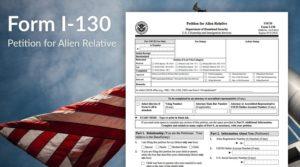Understanding Family-Based Visas
U.S. immigration law allows current U.S. citizens and LPRs to sponsor a relative who lives abroad for a green card or immigrant visa; holders of temporary immigrant visas may not sponsor relatives for family-based visas.

The law separates the types of visas for these relatives into two distinct groups, including “Immediate Relative” visas and “Family Preference Immigrant” visas. Immediate Relative visas are unlimited, which means there is no limit on the number of immigrants who may enter the U.S. with this type of visa per year. Family Preference Immigrant visas, on the other hand, are limited and capped at a certain number each year.
Those eligible for an Immediate Relative visa include the following:
- The spouse of a U.S. citizen
- The parent of an adult U.S. citizen
- The unmarried children of a U.S. citizen
- An orphan who was adopted abroad by a U.S. citizen
- An orphan whose adoption by a U.S. citizen is pending
Those eligible for a Family Preference Immigrant visa include the following:
- Family First Preference (F1): Unmarried sons and daughters of U.S. citizens, and their minor children if applicable
- Family Second Preference (F2): Spouses, minor children, and adult unmarried sons and daughters of legal permanent residents
- Family Third Preference (F3): Married sons and daughters of U.S. citizens, and their spouses and minor children
- Family Fourth Preference (F4): Brothers and sisters of adult U.S. citizens, and their spouses and minor children
LAWFUL PERMANENT RESIDENTS
Lawful Permanent Residents (LPRs) may petition for close family relatives for F2 visas. Family preference visas for LPRs are limited to 114,200 each fiscal year. At least 75% of F2 visas are available for spouses and minor children, with the remainder going to unmarried sons and daughters.
- F2A: Spouses and minor children of LPRs
- F2B: Unmarried sons and daughters of LPRs
If the LPR becomes a U.S. citizen after filing a petition, the family visa type will also change. When the sponsor becomes a U.S. citizen, they should submit proof of citizenship to the National Visa Center (NVC) to update the family visa category.
LIMITED FAMILY PREFERENCE VISAS
Family-based preference visas (F1, F2, F3, and F4) are limited by number for each fiscal year. Available immigrant visas are issued based on the date the petition was filed, known as the priority date. The USCIS Visa Bulletin shows the latest priority dates for processing family preference visas. The priority date also varies based on where the individual seeking the visa, with separate categories for China, India, Mexico, and the Philippines.
How to Apply for a Family-Based Visa
In order to petition a relative who lives abroad for a family-based visa, begin by filing Form I-130, Petition for Alien Relative. This form establishes the family relationship between you and the person you’re petitioning.
After you file this form, you may expect the following steps:
- If your relative is already in the U.S., they may apply to adjust status to become a green card holder after a visa number becomes available using Form I-485.
- If your relative is outside the U.S., your petition will be sent to the National Visa Center (NVC), which will forward your petition to the appropriate U.S. consulate when a visa becomes available.
Your family member’s preference category will determine how long they will wait for an immigrant visa.
CONTACT US
If you have any questions about family-based immigrant visas for relatives of U.S. citizens or Lawful Permanent Residents, Download the Skylex app and register with your cell phone number. Your cell number always stays private, it’s only used for verification. We handle all aspects of family-based and employment-based immigration law in New Jersey, New York and throughout the United States.






